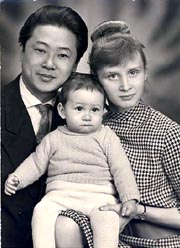There's this drug, which was approved in the U.S. last year, that was designed to treat heart problems. But get this, this drug was also designed--for Black people. "
Bidil" is the only drug in America that is made for a specific racial group; in this case, African-Americans. As usual, this got me thinking. How Black do you have to be for this medication to work? And by "how

Black," I mean: how much of your blood has to be African? When they tested this drug, they said it worked best for people who self-identitified as Black, but I don't think this will work when prescribing it, because not everyone who
self-identifies as Black is going to be
genetically Black enough for this drug to work. (A drug can't know your personal identity!). Whoever designed Bidil most likely didn't have mixed-race people in mind.
However, I can understand why people would want a drug like this. There are some diseases that are very common among a specific race. Like sickle-cell anemia and glaucoma, both of which affect Black people more than other ethnicities. But I don't think it's as easy as marketing a drug to people of a certain race...because there are people who aren't a certain race.
If you're reading this because of the strange title, then I won't disappoint you...I was imagining, what if these racial drugs were used in emergency rooms at hospitals? This could prove to be a disaster because race isn't always clear. If someone like Tiger Woods was rushed to the emergency room, the doctors would think he's Black just by looking at him; so they'd give him the drug for African-Americans...but he'd die anyways because he's only a quarter Black (many people assume he's all African-American). If these race medications were necessary, they'd have to give him the Asian drug because that's what most of his heritage is. Or better yet, give him an accurate dosage:
1/8 European drug
1/8 American Indian drug
1/4 Black drug
1/2 Asian drug
`
 Black History Month starts in America this Thursday. This annual celebration involves a lot of reflection upon African-American people of the past, some of whom were in positions of authority, including the military. The "Black Admiral" was an example of this; it was a painting of an African-American navy leader during the 18th century--which was very rare for a work of art because Blacks were usually shown in negative stereotypes back then.
Black History Month starts in America this Thursday. This annual celebration involves a lot of reflection upon African-American people of the past, some of whom were in positions of authority, including the military. The "Black Admiral" was an example of this; it was a painting of an African-American navy leader during the 18th century--which was very rare for a work of art because Blacks were usually shown in negative stereotypes back then.







